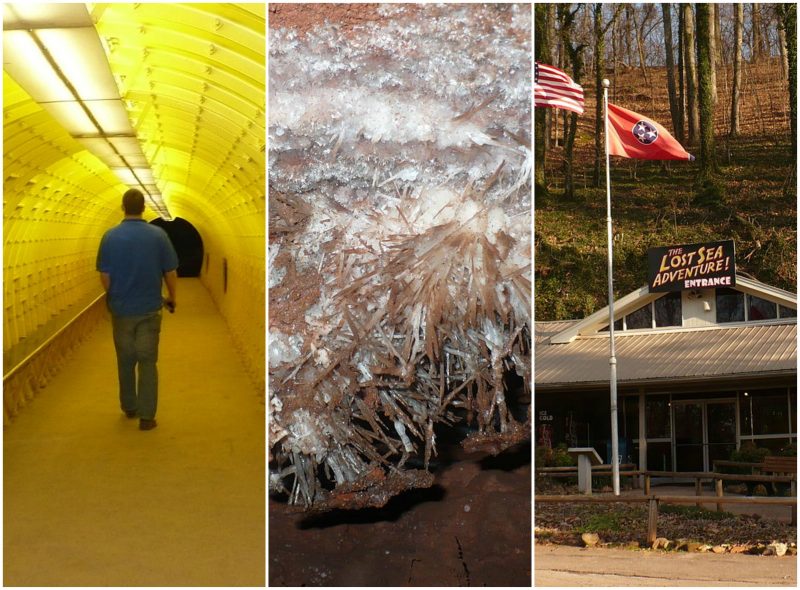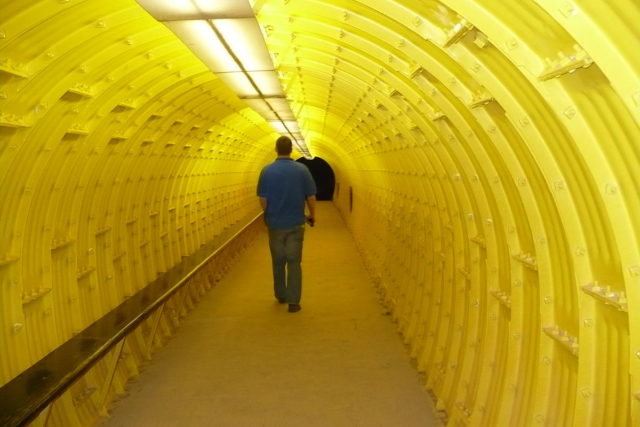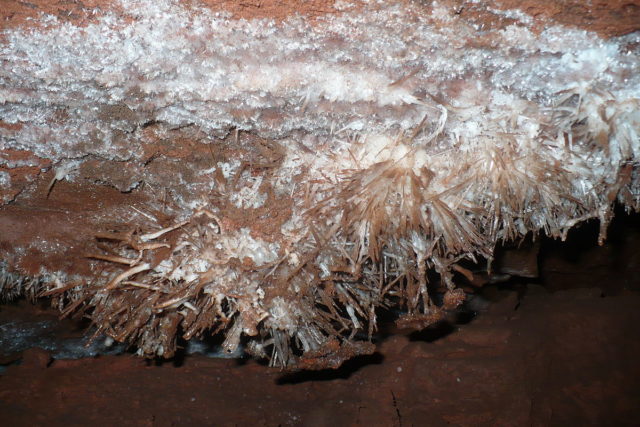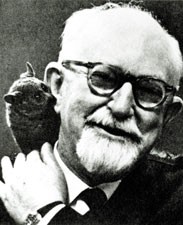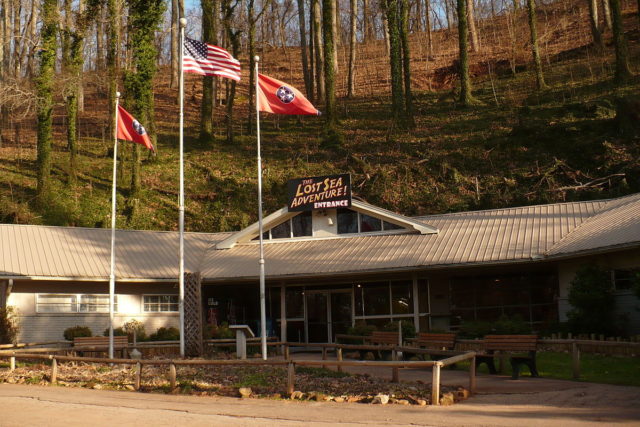 1966 Oldsmobile Toronado
1966 Oldsmobile Toronado
The 1966 Toronado was the first American-build front-wheel-drive car
in three decades and there was nothing else like it when it was
introduced in 1965.
Dubbed as a ‘personal luxury car’ it featured a sleek profile and
an extremely masculine styling that perfectly complemented its
425-cubic-inch V8 engine that generated 385 hp and propelled the
4,000-lb beast to a top speed of 120 mph.
The 7.0-liter V8 was mated to GM’s new Turbo-Hydramatic three-speed
automatic that sent power from the engine to the front differential.
Half shafts then directed the power to the front wheels.
In this four-wheel-drive form, the transmission was called the TH425
which featured a torque converter connected to the planetary gearset by a
chain-drive system called the Hy-Vo.
The first generation Toronado lasted from 1996 to 1970. Olds used the
Toronado name for 26 years, spanning four generations. Annual updates
gave each model year a unique look, particularly up front. Interior
styling also changed to give drivers something new to sit behind.
The 1966 model featured a pointed grille and a long nose. The
headlights were of the popup variety and the front fenders stretched
past the grille. These gave the car a sleek and a one-of-a-kind look.

1969 Dodge Coronet Super Bee 426 Hemi
The Super Bee name has been associated with the Dodge Charger, but
the original Super Bee was later used on the Coronet, which was based on
the Plymouth Road Runner. The car was produced from 1968 to 1970.
The name “Super Bee” was derived from the “B” Body designation
pertinent to the mid-sized cars of Chrysler, including the Charger and
the Road Runner. The design of the original Super Bee was inspired by
the 1968 Coronet convertible, while the car’s cabin was crafted by the
Alexander Brothers.
Although the Super Bee and the Road Runner are similar in terms of
looks, the former was slightly heavier and rode on a 117-inch wheelbase
compared to the latter’s 116-inch wheelbase. Aside from trivial
external variations like bigger rear wheel openings, fancier grilles,
bumblebee tailstripe, and taillight ornamentation, the Super Bee also
made use of diecast chrome-plated “Bee” medallions.
The 1968 model was only available as a two-door coupe with two engine
choices, the base 335 horsepower 383 Magnum, and the 426 Hemi that
blasted out 425 hp. A hardtop version joined the coupe in 1969 and an
optional twin-scooped air induction hood became available. This option
was called the “Ramcharger”and was the counterpart to the Road Runner’s
“Coyote Duster” air induction hood.
A “six-pack” version of Dodge’s 440 cubic-inch engine was added
mid-year. These special order 1969 1/2 Super Bees were referred to as
A12 M-code cars. The A12 package equipped the cars with a Dana 60 axle, a
‘lift off’ flat black scooped hood, heavy duty automatic or a
four-speed gearbox.
Other features of the A12 package included heavy duty internal engine
components, 11-inch drum brakes, and black steel rims wrapped in high
performance G-70 15″ tires. The 1969 model year included the base 383
Magnum, the 440 Six Pack, and the 426 Hemi.
 1971 Stutz Blackhawk
1971 Stutz Blackhawk
1971 was the first production year and generation of the Blackhawk,
an American luxury car manufactured through 1987. These hand-crafted
cars were marketed as pure luxury with an initial price tag of $22,500.
Each of these classic cars took approximately 1,500 hours to build.
The Blackhawk was powered by Pontiac’s 7.5-liter V8 mated to a
General Motors TH400 three-speed automatic. With the engine tuned to
generate 425 hp and 420 ft·lb of torque, the 5000 lb Blackhawk can
accelerate from standstill to 60 mph in 8.4 seconds with a top speed of
130 mph.
Aside from the name, the car bears no other other resemblance to the
original Blackhawk. The Stutz Motor Company was given a new lease on
life in 1968 by James O’Donnell, a banker from New York.
He collaborated with retired Chrysler designer Virgil Exner who
penned the new Blackhawk. Exner’s style included a a massive grille,
freestanding headlights, and a spare tire that protruded through the
trunk lid. Ghia prototyped the new Blackhawk in Italy to the tune of
$300,000.
The Blackhawk made its debut in early 1970 at the Waldorf Astoria in
New York City. All early models were coupes, but rare sedans were built
later. The convertible versions were known as Bearcat and D’Italia.
Stutz Blackhawks were the preferred rides among elite entertainers of
the day.
By 1976 Stutz had sold a total of 205 Blackhawks and six units were
hand-built every month in Italy and then shipped to the United States.
By 1980, 350 Blackhawks had been sold and when production ceased in
1987, approximately 500 to 600 of these classic cars had been produced.
 1958 Buick Caballero Station Wagon
1958 Buick Caballero Station Wagon
The Caballero is one of the automotive world’s rarest and most
expensive wagon ever produced. It was only manufactured from 1957 to
1958 and was called a ‘pillar-less’ hardtop. Buick positioned it near
the upper end of the market.
Under the hood was the company’s new ‘Nailhead’ V8 that cranked out
300 hp on the Century models, and 325 hp with the optional ‘tri-power’
carburetion. The engine is mated to a Dynaflow automatic gearbox with a
new Variable Pitch feature. These classic cars were quick and endowed
with an extensive list of equipment and luxury amenities.
With a design inspired by the Centurion’s 1956 ‘dream car’, Buick
released an all-new line of automobiles for 1957. The cars were easily
distinguished with their elegant interpretation of Buick’s conventional
‘Sweep Spear’ side trim, dipper rear beltline, and full wheel openings.
Vertical grille bars, ‘Venti-Port’ trims on the front fenders, and
vertical rear taillights were all in keeping with the latest Buick
design trends at the time. The wagon has a curb weight of 2120 kg, but
it has decent acceleration and fuel economy rating.
It can go from zero to 60 miles per hour in 9.9 seconds and blitzes
the quarter mile in 17.4 seconds. Theoretical top speed has been pegged
at 116 mph.
 1969 Marcos 3.0 GT
1969 Marcos 3.0 GT
New at the 1968 London Show was the more potent Marcos 3-liter.
Equipped with the double-carb Ford Essex V6 and transmission from the
Ford Zodiac, production kicked off in January 1969.
Maximum power is 140
bhp and aside from the badging, the car is easily recognized by the
huge central hood bulge that was needed to clear the massive engine.
The 3-liter came with a 4-speed manual with a Laycock-de-Normanville
Overdrive for the third and fourth gears. A twin-carbureted 3-liter
Volvo B30 straight-six was offered in December 1969. Two years later, 11
or 12 cars were powered by the 150 bhp Triumph 2.5-liter straight-six.
These engines were called the Marcos 2.5-liter. Since the hood was a
close fit over the bigger engines, a corresponding variation in the hood
design was needed with regard to the modifications intended to clear
engine air intakes.
All inline-sixes required an angular bulge right of center on the
hood in order to clear the carburetors. Later in 1969, V6 cars, like
their four-cylinder counterparts, were given a new steel chassis. The
original monocoque chassis was made of high-grade plywood. Either 100 or
119 of these wood-chassied six-cylinder cars were produced.
The Ford V6 variant accelerated to over 120 mph, but the
Volvo-engined model wasn’t far behind it. With sales in the United
States going strong, production of the Marcos 3.0 was up to three per
week so the automaker had to invest in a larger facility in 1969.
Cars for the North American market were powered by Volvo’s inline-six
cylinder, 3 liter engines bolted to Borg-Warner Type 35 automatic
transmissions. They have a higher ride height and no headlight covers –
all of these were made to attain US road certification.
 1969 Mercury Cyclone Spoiler II
1969 Mercury Cyclone Spoiler II
The Spoiler II was a special edition model built to satisfy the
burgeoning performance car market of the 1960s. It was was specifically
designed and developed to meet NASCAR’s certification requirement and go
toe-to-toe against Ford’s Torino Talladega.
The car was based on the Mercury Cyclone “Sportsroof” two-door
hardtop and it was only sold to the public because homologation rules
required at least 500 cars (the minimum back in 1969) be produced and
offered for sale to the public. All production models were built during
the first few weeks of 1969.
The design featured a flush-mounted grille and a stretched, tapered
nose. The car also had re-rolled rocker panels so it could be lowered
without violating the ride-height requirements of NASCAR. Two trim
packages were offered: the Cale Yarborough Specials in Candy Apple Red
over Wimbledon White, and the Dan Gurney Special in Presidential Blue
and Wimbledon White.
The exact number of Cyclone Spoiler IIs that were produced is
unknown, but it is believed to be somewhere between 300 and 500. These
classic cars were powered by the 351 cubic-inch Windsor engine rated at
290 horsepower. Also produced was a standard-nosed model called Cyclone
Spoiler, which was available with the same trim packages.
A sleeker front end was added to make the Spoiler II more aerodynamic
at high speeds. Regular production Cyclones had an insert grille and
headlights, but the Spoiler II had the nose replaced because it fared
poorly in wind tunnel tests.
In a secret design move, the car’s rocker panels were reshaped and
rolled so Mercury teams can run their racing cars approximately an inch
closer to the ground while remaining within NASCAR regulations. This
also significantly improved the car’s top speed by lowering its center
of gravity and reducing wind resistance.
 1965 Rambler Marlin
1965 Rambler Marlin
American Motors advertised the Marlin as the latest addition to its
self-designed “Sensible Spectaculars” model range. Based on the 1964
Rambler Tarpon, the Marlin was officially introduced to the public on
February 10, 1965 and released to dealer showrooms on March 19.
New car introductions back in the 1960s were a big deal and were
frequently accompanied by extensive publicity and special invitations.
As such, the Marlin was advertised in 2,400 newspapers on its debut and
the news releases of American Motors positioned it as intended for
buyers who want a sporty fastback that was also comfortable and roomy.
The Marlin was American Motors’ first model after the muscle car
launches of the ’60s and the car was meant to outflank rivals as a
vehicle they didn’t offer – a strategy now known as “niche marketing”.
It was also one of the first American classic cars with front disc
brakes as standard.
The Marlin followed the trademark design cues of the Plymouth
Barracuda, Mustang 2+2, Ford Galaxie “Sports Roof”, and the 1965
fastback models from GM, including the Chevy Impala “Sport Coupe”
models.
Standard equipment included deluxe exterior trim, front and rear
center armrests when bucket seats were chosen, individual reclining
front seats, and interiors from American Motors’ two-door Ambassador
model, including the instrument panel and the dashboard.
 1977 Lancia Scorpion
1977 Lancia Scorpion
The Lancia Scorpion is actually an imitation. In Europe it was known
as the Beta Montecarlo and had 120 hp, but due to regulations when it
came to the U.S., the car’s output dropped to a measly 81 hp. At the
time Chevrolet already had the Monte Carlo name in the bag, so it went
with Scorpion.
Spider versions of the Montecarlo sported a unique roll-back targa
style convertible top that was manually operated. Based on the Abarth
030 prototype, the Montecarlo was known as the X1/8 while in
development. It was aimed to be a Fiat-badged sibling to the Fiat X1/9.
It had the same mid-engined setup, with a bigger engine and more
spacious interior.
The car was handed over to Lancia and was built by Pininfarina in
Turin, Italy. Production ran from 1975 to 1979 for the first series
(S1). The second series (S2) was launched in 1980 but production ceased
the following year.
The American market Lancia Scorpion differed from the Monte Carlo in
several ways. It was powered by a smaller engine (1756 cc) because the
1995 cc motor in the Monte Carlo failed to comply with U.S. emissions
standards. Due to the decrease in engine size and the installation of
smog equipment, the Scorpion’s power output was significantly reduced.
The Scorpion featured semi pop-up headlights and the 1976 cars had
solid rear buttresses. All Scorpions had the convertible top, and unlike
the Monte Carlo, it only saw one production run. A total of 1,801 of
these classic cars were built in 1976.
 1965 Plymouth Belvedere II
1965 Plymouth Belvedere II
In 1965, Plymouth decided to make the Fury a full-size car again, so
the Belvedere became the marque’s intermediate size offering, though it
saw little updates and most dimensions remained the same. The Plymouth
Fury was simply enlarged to restore a full-sized range which Plymouth
had been lacking.
The Belvedere line was categorized into the Belvedere I, Belvedere II
and the potent Satellite subseries. The latter was only offered as a
convertible or as a hardtop coupe. These classic cars were powered by
the 4.47-liter “LA block” V8 as the standard engine. Additional V8s were
also offered including the 318, 361, 383, and the 426-S Wedge Head.
The Belvedere I was available as a station wagon or a 2- and 4-door
sedan. The Belvedere II added a convertible and a nine-passenger station
wagon.The Satellite convertible was the lineup’s most exclusive
bodystyle, with production numbers reaching 1,860 units.
The sales figure was almost matched by the Belvedere II convertible,
which saw 1,921 units built for 1965. The most sought after were the
four-door sedans, with 35,968 and 41,445 units built for the Belvedere I
and Belvedere II, respectively.
For 1965, the Belvedere name was dropped as a level of trim
designation. It was used instead on intermediate size cars. Aside from
the additional bodystyles, the differences between the Belvedere I and
Belvedere II were extra accessories.
The Belvedere I had a heater, defroster, seat belts in the front, and
blackwall tires. The Belvedere II came will all the standard equipment
on the Belvedere I, plus special trim and upholstery, carpeting, foam
cushions, and back-up lights.
 1959 DeSoto Firedome
1959 DeSoto Firedome
Everyone knows the sleek and stylish Cadillac Eldorados from the
1950s. The DeSoto Firedome was an equally good-looking car which was
often overlooked at the time. Owned by Chrysler, DeSoto manufactured the
Firedome from 1952 to 1959.
Under the bonnet of the 1959 DeSoto Firedome was an overhead valve
383 cubic inch V-8 that produced 305 horsepower and 410 lb-ft. of
torque. DeSoto offered four bodystyles including a convertible coupe, a
two-door Sportsman, a four-door sedan and Sportsman.
Only 299 units of the convertible coupe were sold in 1959, making it
the rarest in the Firedome range. The most coveted was the four-door
sedan, of which 9,171 examples were produced. A three-speed manual
transmission was standard with an automatic offered for an additional
cost. Swivel front seats and silver color sweeps were also optional.
Standard list of amenities included all the equipment found in the
Firesweep, plus variable speed windshield wipers, back-up lights, wheel
covers, rear foam cushions, and carpets in the front and rear. Midway
through the production year, the automaker added a padded dash, plaid
upholstery, and custom steering wheel.
With an estimated curb weight of 1820 kg, the Firedome was pretty
fast, accelerating from zero to 60 mph in 8.5 seconds and topping out
119 miles per hour. Average fuel consumption was rated at 14 miles per
gallon.
 1962 Studebaker Avanti
1962 Studebaker Avanti
The Avanti is a luxury coupe produced by the Studebaker Corporation
from June 1962 to December 1963. The automaker advertised the Avanti as
America’s only four passenger high-performance car. It was also
described as one of the most important milestones of the postwar auto
industry.
The Avanti smashed 29 records at the Bonneville Salt Flats. The first
private owner was Rodger Ward who received the car after winning the
1962 Indianapolis 500. The Avanti was officially introduced to the
public in April 1962, simultaneously at the Annual Shareholders’ Meeting
and at the New York International Automobile Show.
The car was developed under the supervision of Studebaker president
Sherwood Egbert. The design theme of the Avanti was the product of
sketches Egbert drew casually on a jet-plane flight, 37 days after he
became president of the company in February 1961.
Formal design was made by Raymond Loewy’s team of Bob Andrews, Tom
Kellogg, and John Ebstein. The Avanti featured a fiberglass body mounted
on the modified convertible chassis of the Studebaker Lark Daytona. The
car was powered by a modified 289 Hawk engine.
The complex body shape of the Avanti would have been difficult and
expensive to build in steel, so Studebaker decided to mold the exterior
panels in fiberglass. The work was outsourced to Molded Fiberglass Body
in Ashtabula, Ohio. It was the same firm that manufactured the
fiberglass panels for the Chevy Corvette in 1953.
 1967 DeTomaso Mangusta (Ghia)
1967 DeTomaso Mangusta (Ghia)
The Mangusta is a sports car manufactured and marketed by Italian
automaker De Tomaso from 1967 to 1971. The word “mangusta” is Italian
for mongoose, an animal known for its ability to kill cobras.
Rumor has it that the car was so named because De Tomaso was engaged
in talks with Carroll Shelby about replacing the Shelby Cobra with a
racing car to be produced in Italy.
However, no agreements were signed because Shelby became busy with
the Ford GT40 racing program. Nonetheless. Argentine-born Alejandro de
Tomaso and Carroll Shelby were buddies and business is business, so it
was also speculated that the first batch of engines for the Mangusta may
have been provided by Shelby.
A total of 401 Mangustas were produced, about 150 of the European
model and the rest were the North American version. The first cars were
said to have a more potent Ford HiPo 289 cu-in. engine, while the later
cars were all powered by Ford 302 engines.
For the European version, the Mangusta was originally equipped with a
mid-mounted Ford 289 V8 engine rated at 306 hp. In the North American
market, the Mangusta was available with a 221 hp Ford 302 V8, driving
through a five-speed ZF transaxle.
Giorgetto Giugiaro was responsible for the design of the car, which
is easily distinguished by its gull-wing doors over the engine and
luggage compartment. The Mangusta’s independent suspension, all round
disc brakes, rack and pinion steering, were ahead of other automakers of
the time.
 1956 Buick Centurion
1956 Buick Centurion
The Buick Centurion Concept was another GM/Buick car with fighter jet
aesthetics. It was introduced to the public at the 1956 Motorama Show.
The body had been crafted from fiberglass, while the cabin drew
inspiration from the cockpit of an airplane.
The Centurion’s full glass bubble roof was a daring and dynamic
design move. The aerodynamic features start up front and graciously
flowed through the rest of the car. The two-tone paint job was
highlighted by the red interior and white-wall tires.
Power was supplied by a 325 horsepower V8 engine concealed under the
long hood which sloped toward the grille. The headlights were were part
of the body shell and mounted far behind the bumper. Inside, the
passengers receive fresh air through twin air scoops located near the
sides.
The rear of the Centurion was just as revolutionary, with its
‘wing-type’ fenders that later appeared on the 1959 Buick and Chevy
models. There was also a TV camera in the rear that reported traffic
updates to the driver through a TV screen mounted on the dashboard.
The cabin was trimmed in brushed bright metal and red leather. The
front seats automatically slide back when a passenger opens the door,
offering added space for easy entry and exit.
 1964 Sunbeam Tiger
1964 Sunbeam Tiger
The Sunbeam Tiger is a high-performance variant of the British Rootes
Group’s Sunbeam Alpine roadster, which had four cylinders compared to
the Tiger’s eight. The car was designed in part by legendary American
race car driver Carroll Shelby and it was produced from 1964 to 1967.
Shelby had conducted a similar V-8 conversion on the AC Cobra, and at
that time he was hoping to be offered the contract to build the Tiger
at his factory in the United States. However, Rootes decided to contract
the production work to Jensen Motors Ltd at West Bromwich in England,
and pay Carroll Shelby a royalty for every car built.
The Tiger was developed with the objective of competing against the
Jaguar E-Type, so that tells you a lot right there. Two versions of the
Tiger were produced: the Mark I (1964 to 67) which was powered by a
4.3-liter Ford V8; and the the Mark II which came equipped with the
bigger Ford 4.7-liter engine.
Two prototypes and highly modified versions of the Mark I were
entered into the 1964 24 Hours of Le Mans, but neither managed to
complete the race. The Tiger also competed in European rallies with some
success, and for two years it was the AHRA’s record holder over a
quarter-mile drag strip.
Production ceased in 1967 shortly after the Rootes Group was acquired
by Chrysler, which didn’t have an engine that could replace the Ford
V8. Thanks to the ease and affordability of modifying the Tiger, a few
examples have survived in standard form.
 1966 Saab Sonnett II
1966 Saab Sonnett II
In the early 1960's, Walter Kern, an engineer at MIT, and Björn
Karlström, an aircraft and automotive illustrator, independently
proposed a two-seat roadster with Saab parts and a two-stroke engine
known as the “Shrike”. Two prototypes were built: the Saab Catherina by
Sixten Sason and the Saab MFI13 by Malmö Flygindustri.
After some changes, the MFI13 was put into a limited production run
in 1966 as the Sonnett II. A total of 28 units were made at the
Aktiebolaget Svenska Järnvägsverkstäderna in Arlöv. All were were left
hand drive and equipped with 841 cc three-cylinder two-stroke engines.
Another 230 units were produced in 1967, but as the 2-stroke engine
became uncompetitive in the American market, the Ford Taunus V4 was used
instead and the model was renamed the Sonnett V4.
Aside from the engine, the Sonnett II and Sonnett V4 share multiple
components. Roughly 50 percent of the Sonnett II production survived and
had been preserved or maintained by collectors, museums, and race
enthusiasts.
The fiberglass body of the Sonnett II was bolted to a box-type
chassis and a roll-bar was added to support the hard top. The front hood
section moved forward to provide easy access to the engine, gearbox,
and front suspension.
When powered by a three-cylinder, two-stroke engine rated at 60 hp,
the Sonnett II accelerated from zero to 62 mph in 12.5 seconds, with a
top speed of 93 mph. The Sonnett II successfully competed in Sports Car
Club of America races against other European roadsters like the Triumph
Spitfire and the Austin-Healey Sprite.
 1958 GM Firebird III
1958 GM Firebird III
General Motors built the Firebird III in 1958 and introduced it to
the public the following year at Motorama. It was the most influential
of the Motorama Firebirds and the only member of the Firebird trio to
have a direct impact on the design of GM production vehicles.
It is a lavish concept with a titanium skin and seven short wings and
tail fins that went through rigorous wind tunnel testing. It is a
two-seater driven by a 225 horsepower Whirlfire GT-305 gas turbine
engine. A two-cylinder 10 horsepower gasoline engine powered all the
accessories.
The exterior styling features a double-bubble canopy and some
technical headway to make it more practical, like air conditioning,
cruise control, and anti-lock brakes. The car also featured “Space-Age”
innovations like special air drag brakes similar to those found on an
aircraft.
The brakes emerge from flat panels in the bodywork to slow down the
car from high speeds. Other amenities include an “ultra-sonic” key that
opened the doors, and an automated guidance system to help prevent
accidents. Steering was controlled through a joystick located between
the two seats. This gave the Firebird III a more futuristic feel and
mimicked the experience of flying an airplane.
The Firebird III broke several styling rules of legendary GM designer
Harley Earl, and this was one of the reasons the car became such an
integral design. There were no parallel lines and the car came with very
little chrome.
 1955 Cadillac LaSalle Roadster II
1955 Cadillac LaSalle Roadster II
The LaSalle Roadster II is a concept car developed by General Motors.
During the mid ’50s, some GM executives decided to revive the LaSalle
nameplate which was a sister brand to Cadillac. GM design chief Harley
Earl was delighted with the idea and instructed his crew at the Art
& Colour Section to come up with two different concepts.
One was a small roadster that was introduced alongside a
six-passenger sports coupe. Both vehicles were named LaSalle II to
signify the reemergence of the brand. Buck Rogers handled the styling of
the new LaSalles and he used some bold design cues, together with some
features from LaSalle’s production cars.
The concept was officially unveiled at the 1955 GM Motorama. Some of
the car’s peculiar traits included a vertical slatted grille, side
exhaust, open rear wheels, and floating Dagmar bumperettes. None of
these features were worthy of production, but they helped in
distinguishing the LaSalle from the car it borrowed a lot from –
the Corvette.
GM engineers devised a unibody construction that depended on strength
provided by the side sills of the chassis. These helped in containing
the exhaust which likely easily overheated the cabin, particularly in
the coupe. Sadly, GM installed fake V6 engines with a concept valve
train which included dual overhead camshafts.
 1955 Chevrolet Biscayne XP-37
1955 Chevrolet Biscayne XP-37
The Biscayne XP-37 was a showcase car for the new 4.3-liter V-8 Chevy
engine, which would later play into Corvairs, Corvettes, Eldorados and
Rivieras. General Motors touted this 4-door, 4-passenger, pillar-less
hardtop as ‘an exploration in elegance.’
Featured in the 1955 Motorama, the car wowed the press and the
automotive world in general with its futuristic styling cues. The front
end certainly drew the most attention. Whether it looks like Hannibal
Lecter’s mask or Bane’s mask, it’s a face that commands a second look.
With a panoramic windshield, a series of vertical grille bars, thin
mustache bumpers, long fairings for the headlights, side coves that
wrapped around the rear, swiveling front seats, suicide rear doors, and a
brilliant Atlantic Green paint job, the Biscayne implied some future
Corvette design nuances.
The Biscayne’s wraparound windshield curled into the roofline, which
in turn drifted rearward into the triangular-shaped C-pillars. The
essence of the Corvair is also apparent, especially in rear views of
this concept.
There were no side windows, and the switches for the power windows
were dummies as were the instruments. As a matter of fact, aside from
some motors and servos that opened the doors on the show floor, there
were really no electrical systems. The Biscayne didn’t even have a fuel
tank or a conventional car battery.
 1974 AMC Javelin AMX
1974 AMC Javelin AMX
The Javelin was introduced for the 1968 model year, but it was only
in 1971 that American Motors Corporation launched a marketing campaign,
advertising the car as “the closest thing you can buy to a Trans-Am
champion.”
By mid 1974, Chrysler had left the pony car market, while Ford decided
to replace its original Mustang with a 4-cylinder version. Other pony
car manufacturers followed suit and downsized their engines. The big
engine option of the Javelin soldiered on until production of the model
came to an end in October/November 1974.
The 1974 AMX didn’t fare well when compared to the new Camaro, the
downsized Mustang II and the Firebird – all of which saw increased
sales. Meanwhile, Javelin production hit a second-generation high of
27,696 units, of which 4,980 Javelin-AMX models were built for the final
model year.
The cowl-induction fiberglass hood was no longer offered for 1974,
and the power output of the 6.6-liter V8 engine dropped by 20 ponies. A
new feature was the seatbelt interlock system which prevented the car
from starting if the driver and a front passenger were unbuckled.
A number of factors contributed to the demise of the Javelin,
primarily the economic situation at the time. Unlike the Camaro and the
Firebird, 1974 Javelin models were not exempt from the new front and
rear bumper standards.
According to AMC’s estimate, about $12 million would be spent in
design and engineering work to revise the bumpers so they would comply
with the new standards for 1975. American Motors also launched the new
1974 Matador coupe that competed with the Javelin for “boss” muscle car
styling”.

1956 Pontiac Club de Mer
The Club de Mer was an experimental, purpose-built car that was
developed by Pontiac for the GM Motorama in 1956 to celebrate the
company’s commitment to futuristic design.
The ‘de Mer’ was a two-door sport roadster that integrated innovative
styling such as the sleek, low-profile body housing a massive engine, a
design trend that was widely used in LSR trials at Bonneville Salt
Flats during the 1950's.
A ‘de Mer’ prototype was built and introduced, along with a ¼-scale
model, in Miami. As per General Motors’ kill order, it was scrapped in
1958. Only the model owned by Joseph Bortz of Illinois exists today. The
model was sold by Bortz for $75,000 to renowned car collector Ron Pratt
in 2007 at the Barrett-Jackson Classic Car Auction.
The design of the “de Mer” drew inspiration
from contemporary aircraft construction of its time. It featured a
stainless steel monocoque, individual windscreens, concealed headlights,
a single rear-deck dorsal fin, and an aerodynamic fascia that drifted
down from the hood to cover most of the grille.
Also used were two “silver-streaks” that cascaded into low-profile
hood scoops. The overall design of the body was a smooth profile,
similar to a supersonic jet fighter, with nearly no protrusions or
recesses save for the fin and the out-vents on the leading edge of both
doors.
Source: legendaryvideos.com






















